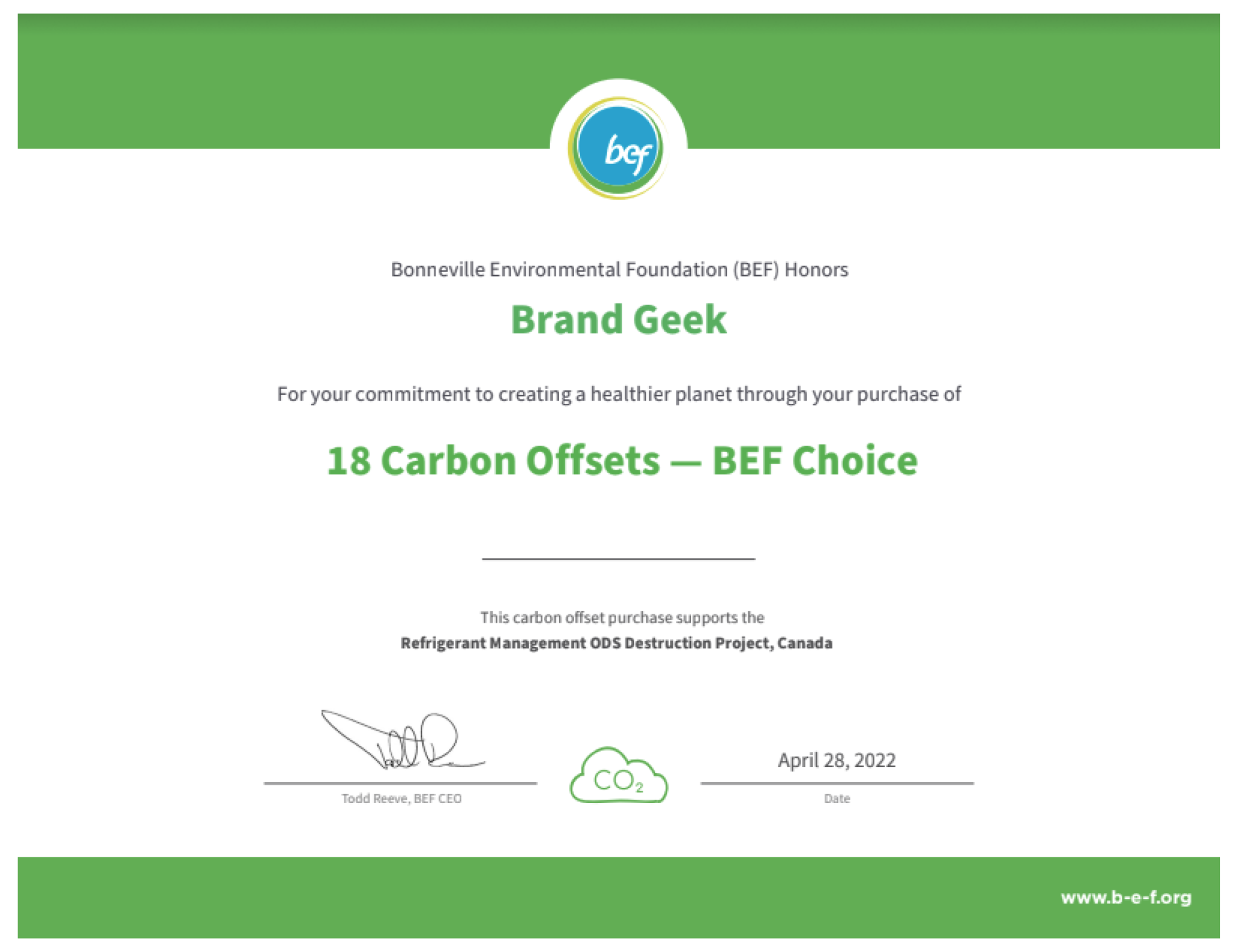Brandgeek proudly supports Mountain Area Preservation and is humbled to be…
The New FTC Green Guides have Arrived

Two years ago, the FTC proposed revisions to its Green Guides (Guides for the Use of Environmental Marketing Claims, “the Guides”) which first were released in 1992. The Guides then were revised in 1996 and 1998 before lying dormant for twelve long years. I first wrote about the Guides back in August, 2010, and they have come up on Brand Geek several times since.
Yesterday, the FTC announced the release of its revised Guides. The document lays down the ground rules for marketers and others making environmental marketing claims. The Basis and Purpose for the Guides apparently was far more significant than the Guides themselves, warranting a 314 page Statement. Thankfully, the FTC also issued a 4 page summary highlighting the key points of the new Guides.
The first notable difference between the 1996 and 2012 Guides is their length and breadth. The old Guides had 8 sections, of which only 2 (Sections 6 and 7) were substantive:
[framed_box] OLD Guides260.1 Statement of Purpose.
260.2 Scope of guides.
260.3 Structure of the guides.
260.4 Review procedure.
260.5 Interpretation and substantiation of environmental marketing claims.
260.6 General principles.
260.7 Environmental marketing claims.
260.8 Environmental assessment.
[/framed_box]
The new Guides have 17 Sections, of which 14 are substantive:
[framed_box] NEW Guides260.1 Purpose, Scope, and Structure of the Guides.
260.2 Interpretation and Substantiation of Environmental Marketing Claims.
260.3 General Principles.
260.4 General Environmental Benefit Claims.
260.5 Carbon Offsets.
260.6 Certifications and Seals of Approval.
260.7 Compostable Claims.
260.8 Degradable Claims.
260.9 Free-Of Claims.
260.10 Non-Toxic Claims.
260.11 Ozone-Safe and Ozone-Friendly Claims.
260.12 Recyclable Claims.
260.13 Recycled Content Claims.
260.14 Refillable Claims.
260.15 Renewable Energy Claims.
260.16 Renewable Materials Claims.
260.17 Source Reduction Claims.
[/framed_box]
Another initial significant change to the Guides is apparent on the second page, which states that, “[t]hese guides apply to claims about the environmental attributes of a product, package, or service in connection with the marketing, offering for sale, or sale of such item or service to individuals. These guides also apply to business-to-business transactions.” It was not clear whether the previous Guides applied to service offerings and / or B2B transactions. The General Principles section also states that the Guides apply to both direct and implied claims whether through words, symbols, logos, depictions, product brand names, or any other means. In other words, the Guides may be expected to cover any and all means by which claims of environmental benefit may be conveyed. Substantiation remains key.
The Guides continue to stress that broad claims should be avoided and general claims made only when qualified by specific environmental benefits. For example, when claiming a product is “eco-friendly,” one also must prominently state what makes the product so (e.g. made with recycled materials) and such claim must be substantiated for the entire product. The revised Guides also caution that an environmental benefit that has negative consequences should not be marketed as a benefit (e.g. the packaging has less plastic but the overall manufacturing process is more harmful to the environment), which strongly encourages (if not requires) life cycle assessment for products marketed through claims of general environmental benefit. Interestingly, the Section on General Environmental Benefit Claims is the only place in which the term lifecycle appears in the Guides. This is addressed in Section III of the Statement, which explains that the Commission intentionally declined to propose guidance on Life Cycle Assessments (LCAs) due to their complexity and the lack of information about how consumers interpret them.
The new Section on Eco Seals and Certifications (of which there are 432 worldwide, according to the EcoLabel Index database) expressly states that, “[a] marketer’s use of the name, logo, or seal of approval of a third-party certifier or organization may be an endorsement, which should meet the criteria for endorsements provided in the FTC’s Endorsement Guides . . .” This section also cautions marketers that “[t]hird-party certification does not eliminate a marketer’s obligation to ensure that it has substantiation for all claims reasonably communicated by the certification.” Thus, third party certification cannot be used as an end-run around the Guides.
The remaining sections discuss appropriate and inappropriate uses of each type of claim identified. For example, a product or package should not be marketed as recyclable unless it can be collected, separated, or otherwise recovered from the waste stream through an established recycling program for reuse or use in manufacturing or assembling another item. Further, a marketer should not make an unqualified refillable claim unless the marketer provides the means for refilling the package. Similarly, source reduction claims should be qualified to the extent necessary to avoid deception about the amount of the source reduction and the basis for any comparison.
 Overall, the Guides strive to govern common sense and fairness. While directly enforceable only by the FTC, they are certain to be relied on by litigants and the courts, especially as the false advertising class action feeding frenzy continues.
Overall, the Guides strive to govern common sense and fairness. While directly enforceable only by the FTC, they are certain to be relied on by litigants and the courts, especially as the false advertising class action feeding frenzy continues.
http://www.ftc.gov/os/2009/10/091005revisedendorsementguides.pdf





Comments (0)